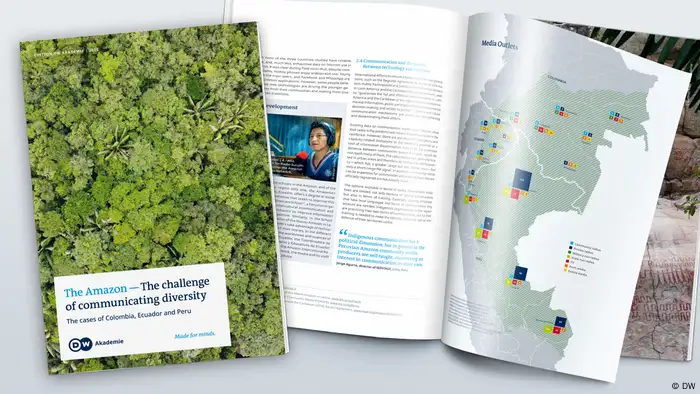Publications
The Amazon – The challenge of communicating diversity. The cases of Colombia, Ecuador, and Peru.
This study offers key data on the diverse characteristics of the Amazon region in order to better understand the communication processes there and identify the needs, best practices and perspectives for the future.
Communication is an enormous challenge in the Amazon basin, not just because of environmental issues but because this is a vast and diverse region that is home to a multitude of cultures. The area covers 6.74 million square kilometers and, according to Amazon Cooperation Treaty Organization (OCTA), has a population of 35 million people.
DW Akademie, together with its partners in the region, is seeking to strengthen communication processes there to increase the visibility of both its biological and cultural diversity as well as its social and environmental conflicts. It aims to boost public debate on possible solutions, with inhabitants as the champions of the debate and their voices being heard, and with access to the information they need to actively participate in decision-making processes. If the Amazon rainforest is to be saved, it is crucial to empower those who live there so they can better defend their territories and ecosystems.
The right to freedom of expression and access to information, as anchored in Article 19 of the Universal Declaration of Human Rights, plays a central role here and is why the current communications processes in the Amazon are the focus of this study.
The data presented here are the results of research conducted between October 2019 and February 2020 using a mixed methodology comprised of an analysis of written sources, interviews with experts from different areas and visits to 19 Amazonian communities located in Ecuador, Peru and Colombia. A series of workshops and discussions on alternative communication strategies were also held.
This study looks at the region’s existing infrastructure, including transport routes and means of transportation, electric power, Internet availability and access, and the local media and communications landscape. It also looks at the many social and environmental conflicts affecting the region and provides results of the fieldwork. In its conclusion, the study offers communication alternatives for this vast and diverse region.
DW recommends
Downloads
- Date 08.12.2020
- Feedback: Send us your feedback.
- Print Print this page
- Permalink https://p.dw.com/p/3mO9p
- Date 08.12.2020
- Send us your feedback.
- Print Print this page
- Permalink https://p.dw.com/p/3mO9p

